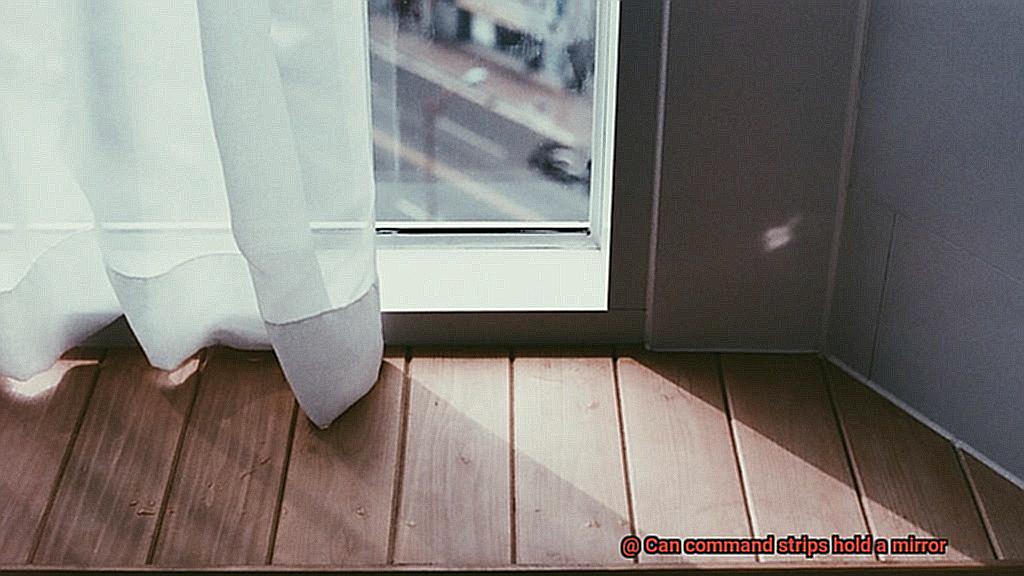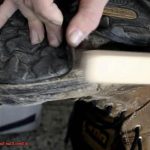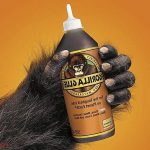Ever found yourself in a sticky situation, quite literally? Imagine this: you’re knee-deep in a DIY project or desperately trying to fix something with super glue. And then, disaster strikes – a drop of that powerful adhesive lands on your fingers or some unintended surface.
Cue the panic as you struggle to break free, only to find yourself stuck like a fly in a spider’s web. But fear not. We’re here to embark on an exhilarating journey and answer the burning question: can dried super glue be removed?
Escaping the clutches of dried super glue may seem like an impossible mission, but we refuse to surrender without a fight. Join us as we unravel the mysteries behind this indomitable bond and discover ingenious hacks, proven methods, and expert advice for effective removal. This adventure will take us through various surfaces, from delicate fabrics to unforgiving metals and glass.
Throughout our quest, we’ll explore the ins and outs of super glue’s nature, uncovering its secrets while arming ourselves with essential dos and don’ts for successful removal. With step-by-step instructions at our disposal, no challenge will go unturned.
So, gear up and get ready for an enthralling dive into the world of removing dried super glue. Armed with our expertise, you’ll soon possess the knowledge and tools needed to break free from even the most stubborn bonds. Say goodbye to unwanted stickiness – let’s embrace this adventure together.
Overview of the Challenges of Removing Dried Super Glue
Contents
- 1 Overview of the Challenges of Removing Dried Super Glue
- 2 Method 1: Using Acetone or Nail Polish Remover
- 3 Method 2: Applying Heat
- 4 Method 3: Rubbing Alcohol
- 5 Method 4: Sanding
- 6 Benefits and Drawbacks of Each Removal Method
- 7 Tips for Safely and Effectively Removing Dried Super Glue
- 8 Alternatives to Removing Dried Super Glue
- 9 Conclusion
Dried super glue, a formidable adversary indeed, clings tenaciously to surfaces, posing a real challenge for its removal. With its unyielding adhesion and resistance to solvents, removing dried super glue requires a strategic approach.
In this comprehensive overview, we will delve into the difficulties encountered and explore effective methods to conquer this sticky predicament.
Mighty Adhesion:
Super glue’s adhesive properties are legendary, forging unbreakable bonds between materials. Once dried, it solidifies into an ironclad grip, defying traditional cleaning methods. The Herculean adhesion of dried super glue is the primary obstacle in its removal.
Solvent Standoff:
Common solvents and water prove futile in dissolving dried super glue. Its insolubility in these substances makes it impervious to standard cleaning agents. As a result, alternative techniques must be employed to conquer this resilient foe.
Perilous Surface Damage:
Forcefully attempting to dislodge dried super glue from surfaces often leads to unintended consequences such as unsightly scratches or damage to the underlying material. Delicate surfaces like glass or plastic are particularly vulnerable. Therefore, exercising caution is paramount to prevent further harm during the removal process.
Material Matters:
The type of material greatly influences the level of difficulty in removing dried super glue. Porous surfaces like wood or fabric absorb the glue, exacerbating the already arduous task of complete removal. Each material presents its own unique challenges, necessitating tailored approaches for effective elimination.
Race Against Time:
The passage of time intensifies the grip of dried super glue, making its removal increasingly arduous. Swift action is imperative to enhance the chances of success. Delaying the battle against dried super glue only strengthens its hold on surfaces.
Method 1: Using Acetone or Nail Polish Remover
In our quest to liberate surfaces from this sticky predicament, we now turn our attention to Method 1: using acetone or nail polish remover. Armed with the knowledge gathered from our research, we are ready to tackle this formidable adversary head-on. So grab your cleaning cloth and let’s dive into the world of solvents.
The Power of Acetone:
Acetone, the superhero solvent, possesses the astounding ability to break down the molecular bonds of super glue, rendering it vulnerable and easily removable. This formidable ally is readily available in nail polish remover, making it a convenient weapon in our arsenal.
Safety First: Test and Protect:
Before unleashing the power of acetone on your surfaces, exercise caution by conducting a small patch test on an inconspicuous area. This preliminary step ensures that no damage or unsightly discoloration occurs. Once you’ve confirmed its compatibility, it’s time to suit up for battle.
Applying Acetone:
Prepare for action by saturating a clean cloth or cotton ball with a small amount of acetone. With unwavering determination, gently rub this powerful solvent onto the dried super glue, targeting the affected area with precision. Allow the acetone to work its magic by granting it a few minutes to soften the glue.
The Softening Effect:
With each passing minute, witness the super glue relinquishing its tenacious grip under the relentless assault of acetone. As the glue succumbs to its fate, seize a clean cloth or paper towel and delicately wipe away the loosened adhesive. Remember, patience is paramount in this battle of wills. For thicker or more stubborn super glue, brace yourself for multiple rounds of this process.
Post-Glue Cleanup:
The once-indomitable super glue has been vanquished from your surface. Now, embark on the final step of restoring its former glory. Employ warm soapy water to cleanse the area, ensuring the complete eradication of both glue residue and any remnants of acetone. This meticulous effort will leave your surface gleaming with newfound radiance.
Method 2: Applying Heat
As we continue our quest to restore surfaces to their former glory, we now delve into the second method in our arsenal: applying heat. Just like a skilled artisan utilizing a powerful tool, heat can soften the unyielding grip of super glue, making it easier to vanquish without causing harm. However, before we embark on this fiery journey, let us not forget the ever-present guide of safety. Remember, safety is our trusted ally throughout this endeavor.
The Hairdryer: A Loyal Companion
Ah, the unassuming hairdryer, a steadfast ally in many battles against stubborn super glue. Harness its power by setting it to a low or medium heat setting, and wield it a few inches away from the clutches of the glue.
Like a seasoned warrior, move it around with precision, ensuring that the heat is evenly distributed. But beware, brave warriors. Do not draw too near or linger for too long in one spot, lest you risk scarring your treasured surface.
Warm Water: A Gentle Caress
When confronted with fabric or clothing ensnared by dried super glue, warm water becomes your gentle confidant. Begin by immersing the affected area in warm water for a few minutes, allowing the adhesive to relinquish its hold. Armed with a soft cloth or sponge, tenderly massage the area to coax the glue away. Repeat this ritual until victory is yours and your fabric is freed from its adhesive shackles.
The Hot Towel: An Enveloping Embrace
For those diminutive objects or areas resistant to heat’s allure, a hot towel shall be your guiding light. Immerse a pristine towel in scalding water and wring out any excess moisture. Place this steaming emissary upon the dried super glue and let it rest, as if decreeing its surrender. As the heat performs its enchantment, arm yourself with a plastic scraper or your trusty fingernails to scrape away the softened glue. Yet, heed my warning, valiant warriors: exercise caution to avoid injury.
Method 3: Rubbing Alcohol
In our quest to conquer adhesive adversaries, we’ve already explored the formidable power of heat against dried super glue. But now, prepare to witness the mighty hero of our arsenal: rubbing alcohol.
Ah, rubbing alcohol, that trusty household item with a seemingly endless list of uses. And guess what? Removing dried super glue is one of them. But before we embark on this epic battle, heed this cautionary tale: only wield rubbing alcohol on non-porous surfaces. Keep it far away from cherished wooden or fabric items, for it can unleash damage and discoloration upon them.
Alright, let’s dive into action. To vanquish dried super glue using rubbing alcohol, follow these steps:
- Assemble your supplies: rubbing alcohol, a clean cloth or cotton ball, and perhaps an old toothbrush or soft-bristled brush.
- Apply a small amount of rubbing alcohol onto your cloth or cotton ball. Don’t go overboard; a mere dab will suffice.
- Gently dab the cloth or cotton ball onto the dried glue. Beware, dear warrior, for spreading the glue will only worsen your plight. We must avoid such dire consequences.

Now, here’s the secret elixir: allow the rubbing alcohol to permeate the glue for a few minutes. It shall soften its unyielding grip, making it easier for you to bid farewell to that stubborn adhesive.
Once the glue has had its share of soaking, summon your trusty old toothbrush or soft-bristled brush and commence a gentle assault on the softened glue. As you witness its surrender to your skilled strokes, you shall feel like an invincible superhero.
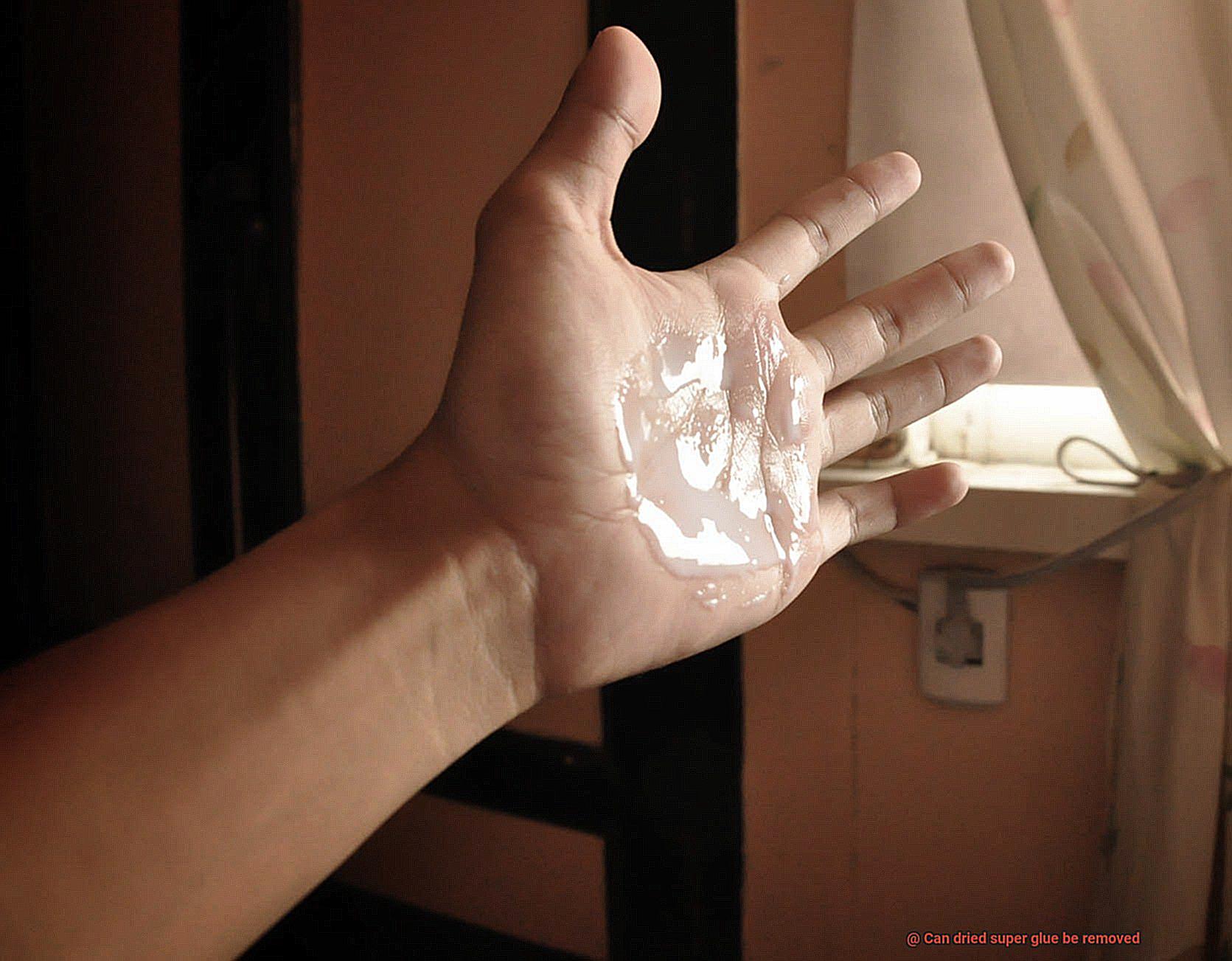
Depending on the size or obstinacy of the glue stain, you may need to repeat the process multiple times. Despair not, for persistence is the key in this battle against dried super glue. You shall emerge victorious.
Victory is nigh. Now that you have successfully eradicated all traces of the dried super glue, it’s time for the final showdown. Employ mild soap and water to cleanse away any remnants of the rubbing alcohol.
Method 4: Sanding
In our mission to defeat dried super glue, we have explored various tactics, but now it’s time to unleash the true hero of our arsenal. Prepare to witness the remarkable abilities of sandpaper as it rescues your smooth and hard surfaces from the clutches of stubborn super glue. Strap on your safety goggles and prepare to embark on a journey into the captivating world of sanding.
Method 4: Sanding – The Battle Begins:
Imagine a flawless wooden table or a sleek metal surface marred by dried super glue. Fear not, as sanding is here to save the day. This method is particularly effective for surfaces like wood, metal, or plastic that demand a gentle yet powerful touch.
Gathering Your Weapons:
Before embarking on your mission, gather your supplies. Arm yourself with sandpaper boasting a medium to fine grit (we must be cautious not to go too rough.), a trusty sanding block or a small piece of wood, and let’s not forget those essential safety goggles to shield your eyes from any flying debris.
Testing the Waters:
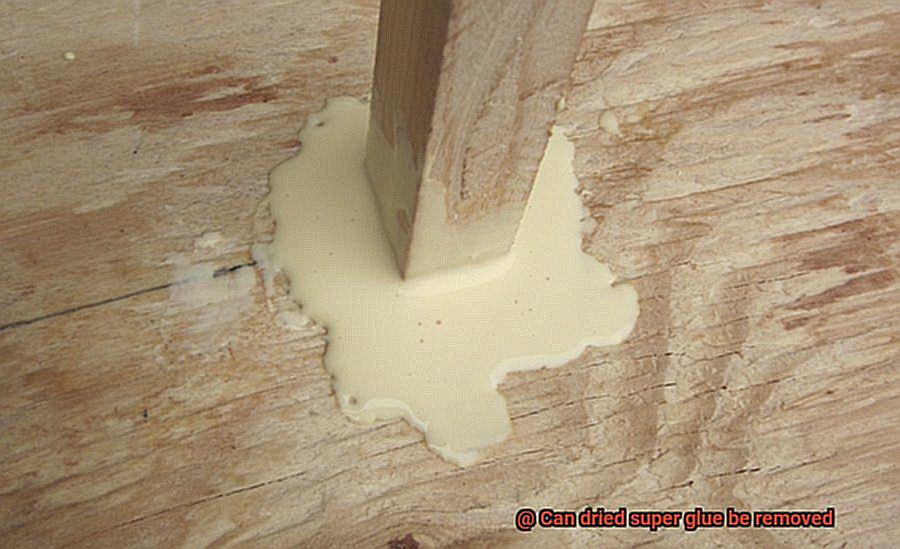
Even superheroes have their limits. To avoid unintended damage, it’s wise to perform a test on a small inconspicuous area first. This will provide insight into how your chosen surface will react to the sanding process.
Getting Down and Dirty:
Now that you’re equipped and prepared, secure the sandpaper onto your chosen weapon – whether it’s a sanding block or a piece of wood. This ensures a consistent and even surface for optimal sanding performance. And remember, safety goggles are non-negotiable.
With determination and finesse, gently rub the sandpaper against the dried super glue in a back-and-forth motion. Apply moderate pressure, being mindful not to exceed the limits and cause scratches or damage. The goal is to gradually wear down the glue layer by layer, inching closer to victory with each stroke.
Assess and Progress:
As you sand, take regular breaks to wipe away any dust or debris with a clean cloth. This will provide a clear view of the battlefield, allowing you to assess how much glue remains and if further sanding is necessary. Continue the battle until every last trace of dried super glue has been eradicated.
Benefits and Drawbacks of Each Removal Method
Today, we embark on a quest to conquer the mighty challenge of removing dried super glue. Fear not, for I, your adhesive aficionado, have gathered invaluable knowledge on the most popular removal methods.
Brace yourselves as we explore the benefits and drawbacks of each technique. Let the battle begin.
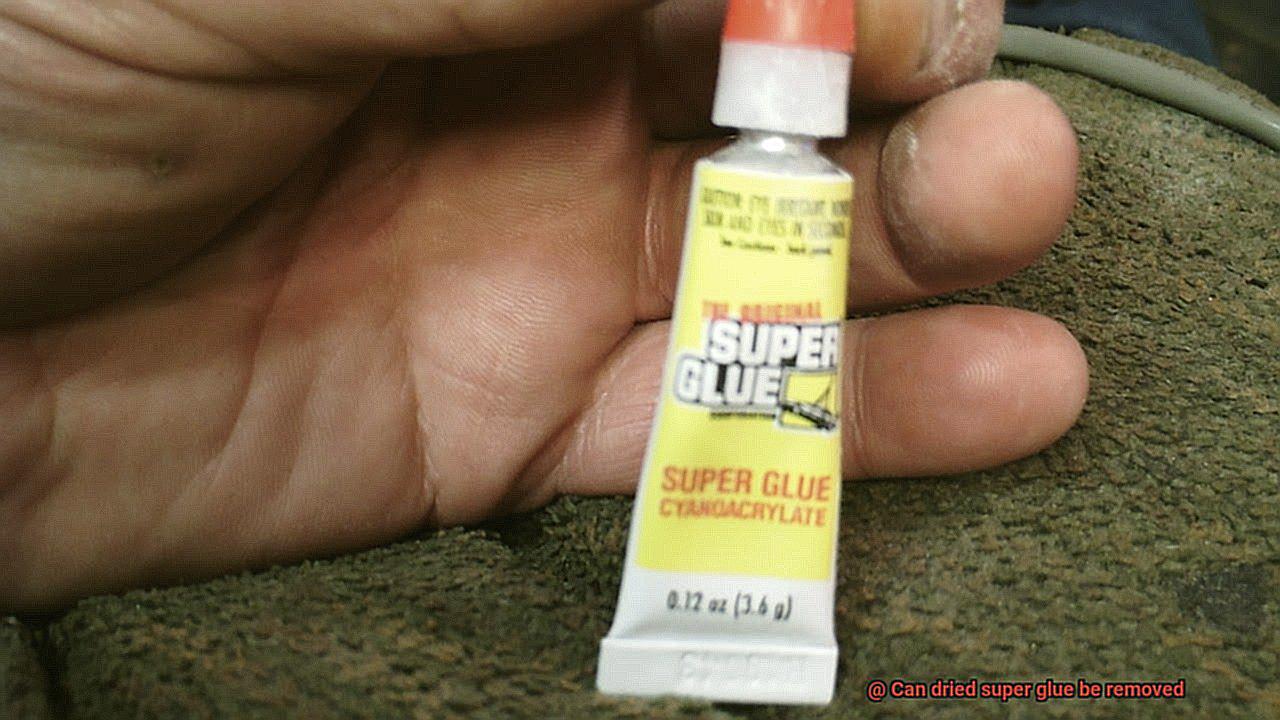
Benefits:
- Acetone, the champion of super glue removal, stands tall as a widely used solvent. Find it in nail polish removers or hardware stores with ease.
- This formidable solution effortlessly breaks down dried super glue, leaving no trace behind.
- Quick and convenient, acetone is perfect for those craving immediate results.
Drawbacks:
Warm Soapy Water: The Gentle Giant
Benefits:
- For those seeking a more tender approach, warm soapy water emerges as the trusty sidekick. It’s safe to use on most materials, sparing you from damage-related woes.
- Soak the afflicted area in this gentle elixir to soften the dried super glue, making peeling or scraping a breeze.
- Non-toxic and fuss-free, warm soapy water is a hero for all eco-conscious warriors.
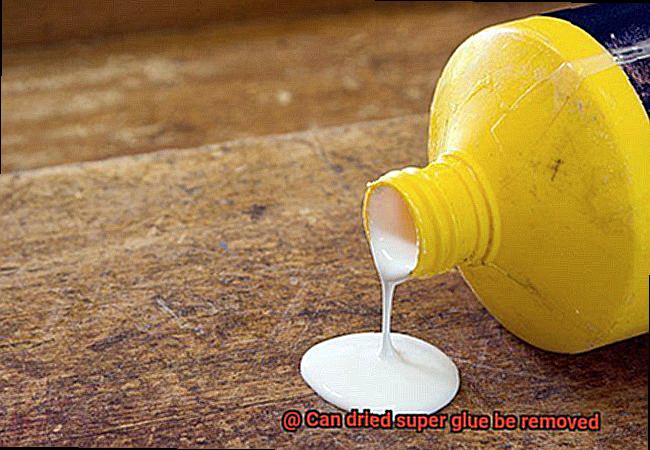
Drawbacks:
- Alas. Warm soapy water may not triumph over all types and thicknesses of super glue. Prepare for multiple attempts or extended soaking to defeat stubborn adhesive.
- Porous surfaces may prove more resistant to this gentle giant’s charms.
Vinegar: The Acidic Ally
Benefits:
- Vinegar answers the call as a safe and ubiquitous alternative to acetone. Found in most households, it stands ready to combat dried super glue.
- This acidic solution dismantles the adhesive properties of the glue, paving the way for easy removal.
- Nature’s warrior, vinegar is a favorite among those seeking a natural and eco-friendly approach.
Drawbacks:
- Vinegar, though valiant, may not match the swiftness or potency of acetone. Prepare for multiple applications or extended exposure for optimal results.
- The strong aroma of vinegar may prove an unpleasant adversary for some.
Tips for Safely and Effectively Removing Dried Super Glue
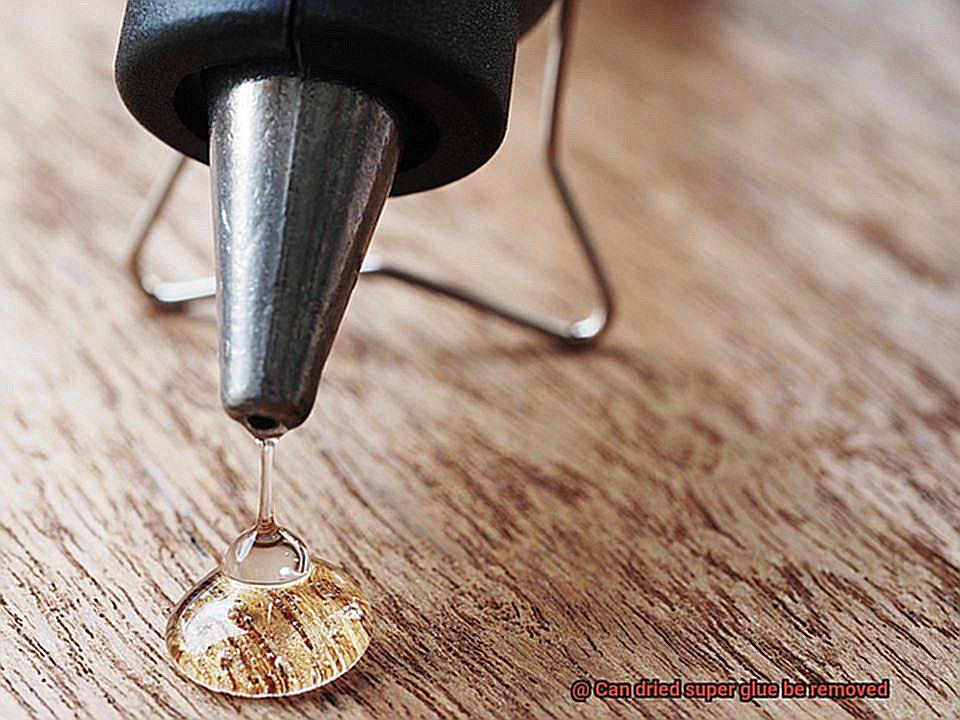
Removing dried super glue can be a daunting task, but it’s crucial to approach it with caution and the right techniques to avoid any damage or accidents. In this article, we will delve into the importance of following safety tips and using the correct methods when attempting to remove dried super glue. By understanding these tips and implementing them correctly, you can safely and effectively tackle even the toughest super glue stains.
Acetone-based Nail Polish Remover: The Powerhouse Solution
When it comes to removing dried super glue, acetone-based nail polish remover is your secret weapon. This potent solvent contains acetone, which effectively breaks down the glue. To use it, soak a cotton ball or swab in the nail polish remover and gently dab it onto the affected area. Allow the remover to sit on the glue for a few minutes, allowing it to soften before gently rubbing or peeling off the glue. Remember not to scrub too vigorously or apply excessive force, as this may cause damage to the surface.
Warm Soapy Water: A Gentle Alternative
For delicate surfaces or materials that may be sensitive to acetone, warm soapy water provides an effective alternative for removing dried super glue. Fill a bowl with warm water and add a few drops of mild dish soap. Soak the affected area in the soapy water for several minutes to soften the dried glue. Using a soft cloth or sponge, gently rub away the glue using light pressure in a circular motion. Rinse the area with clean water and pat dry with a towel.
Rubbing Alcohol: An Effective Dissolver
Another useful method for removing dried super glue is rubbing alcohol, also known as isopropyl alcohol. Moisten a cloth or cotton ball with rubbing alcohol and gently rub it onto the glue until it starts to dissolve. Continue rubbing until the glue is completely removed. Rinse the area with water and dry it thoroughly to ensure no residue remains.
Vegetable Oil: A Natural Solution
In some cases, vegetable oil can be used as a natural alternative for removing dried super glue. Apply a small amount of vegetable oil directly onto the affected area and let it sit for a few minutes to penetrate the glue. Gently rub the area with a soft cloth or sponge to break down the adhesive. Rinse with warm soapy water and pat dry.
Commercial Super Glue Removers: When All Else Fails
If the above methods do not yield satisfactory results, commercial super glue removers are available in the market. These products are specifically designed to dissolve and remove dried super glue from various surfaces. It’s crucial to carefully follow the instructions provided on the packaging and exercise caution when handling these chemicals. Before applying them to larger or more valuable surfaces, always test a small, inconspicuous area to ensure they do not damage or discolor the surface.
Important Safety Tips:
Alternatives to Removing Dried Super Glue
Imagine the frustration of discovering dried super glue on your favorite shirt, countertop, or even your fingers. But fear not. As an expert in the field, I have compiled a list of 7 powerful alternatives that will help you conquer those stubborn dried super glue stains once and for all. So let’s dive in and explore these effective solutions.
Acetone – The Mighty Solvent:
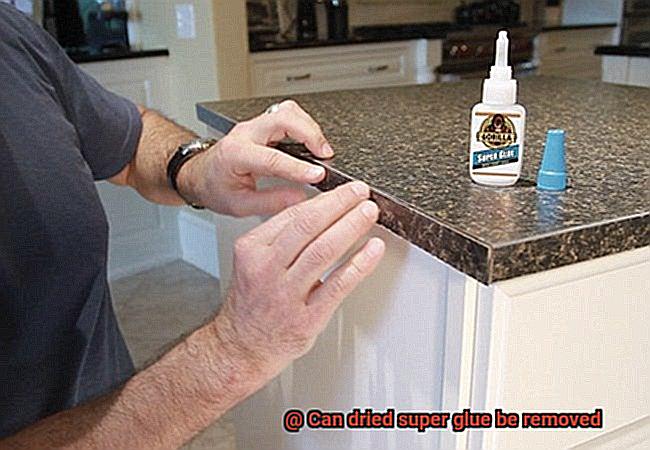
When it comes to removing dried super glue, acetone reigns supreme. This powerful solvent, commonly found in nail polish removers, can dissolve the bond created by super glue. Simply soak a cotton ball or swab in acetone, apply it to the affected area, and let it sit for a few minutes. Then, with finesse, gently scrape off the softened glue using a plastic scraper or your trusty fingernail.
Isopropyl Alcohol – Gentle Yet Effective:
For those seeking a less aggressive option, isopropyl alcohol, also known as rubbing alcohol, comes to the rescue. Apply a small amount of this wonder liquid to a cloth or cotton ball and rub it onto the dried glue. After letting it sit for a few minutes, watch as the softened glue surrenders to your gentle scraping.
Warm Soapy Water – A Gentle Touch:
If you prefer a more gentle approach, warm soapy water is here to lend a helping hand. Fill a bowl or sink with warm water and add a few drops of dish soap. Submerge the affected area and let the warm water work its magic in loosening the adhesive grip of the dried super glue. Armed with a soft brush or cloth, gently scrub away the softened glue, leaving your surfaces unharmed.
Olive Oil or Vegetable Oil – Natural Magic:
When household staples like acetone or rubbing alcohol are not on hand, fear not. Olive oil or vegetable oil can come to the rescue. Apply a generous amount of oil to the dried super glue and patiently wait for about 30 minutes. As the oil works its wonders, the glue will soften, making it easier to remove. With precision and care, gently scrape off the softened glue using a plastic scraper or your dependable fingernail.
pzB8w1ahStI” >
Conclusion
Is it possible to remove dried super glue? This is a question that many people have pondered when faced with the frustrating aftermath of an accidental spill or mishap. The good news is that, with some patience and the right techniques, dried super glue can indeed be removed. But don’t fret, for I am here to guide you through this sticky situation.
One method to tackle dried super glue is by using acetone. This powerful solvent has the ability to break down the bonds of the glue, making it easier to remove. Simply soak a cloth or cotton ball in acetone and gently dab at the affected area. Be cautious not to rub too vigorously, as this could damage the surface underneath.
If acetone is not readily available, fear not. There are other household items that can come to your rescue. For instance, rubbing alcohol or nail polish remover containing acetone can also do the trick. Apply these substances in the same manner as described above and watch as the dried super glue begins to dissolve before your eyes.
In some cases, heat can be used as a secret weapon against dried super glue. By applying moderate heat from a hairdryer or heat gun, you can soften the adhesive and make it more pliable for removal. However, exercise caution and ensure that you do not overheat any delicate surfaces.
For those who prefer a more natural approach, there are alternative methods available as well. Lemon juice or vinegar can be effective in breaking down dried super glue due to their acidic properties. Simply apply either of these liquids onto a cloth and gently rub at the affected area until the glue loosens its grip.
Remember, patience is key when attempting to remove dried super glue. It may take several attempts and some gentle scraping with a plastic scraper or toothbrush to completely eliminate all traces of the adhesive. And always remember to test any product or method on a small inconspicuous area first to avoid causing any damage.

